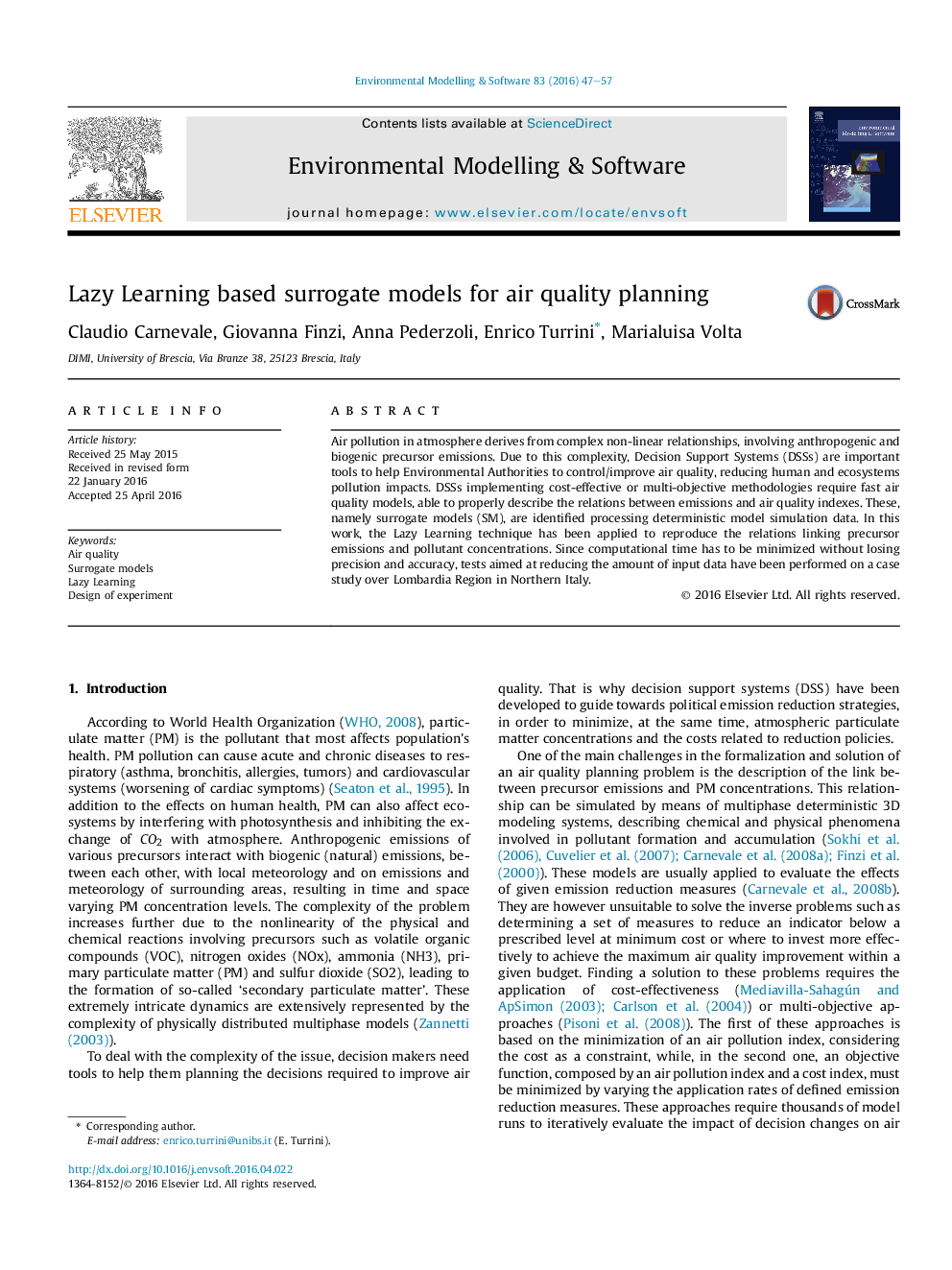| Article ID | Journal | Published Year | Pages | File Type |
|---|---|---|---|---|
| 6962379 | Environmental Modelling & Software | 2016 | 11 Pages |
Abstract
Air pollution in atmosphere derives from complex non-linear relationships, involving anthropogenic and biogenic precursor emissions. Due to this complexity, Decision Support Systems (DSSs) are important tools to help Environmental Authorities to control/improve air quality, reducing human and ecosystems pollution impacts. DSSs implementing cost-effective or multi-objective methodologies require fast air quality models, able to properly describe the relations between emissions and air quality indexes. These, namely surrogate models (SM), are identified processing deterministic model simulation data. In this work, the Lazy Learning technique has been applied to reproduce the relations linking precursor emissions and pollutant concentrations. Since computational time has to be minimized without losing precision and accuracy, tests aimed at reducing the amount of input data have been performed on a case study over Lombardia Region in Northern Italy.
Related Topics
Physical Sciences and Engineering
Computer Science
Software
Authors
Claudio Carnevale, Giovanna Finzi, Anna Pederzoli, Enrico Turrini, Marialuisa Volta,
